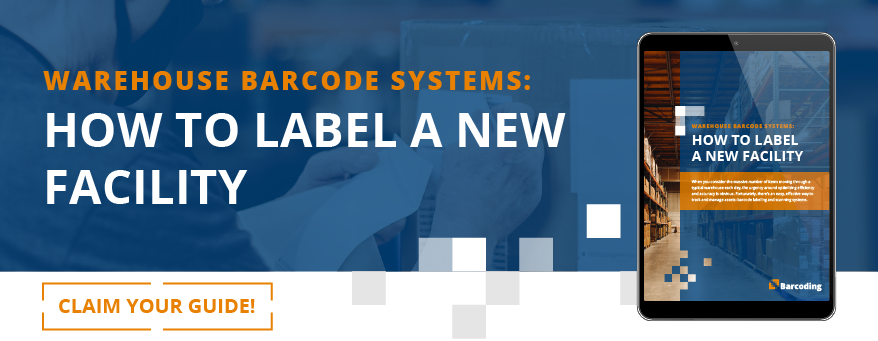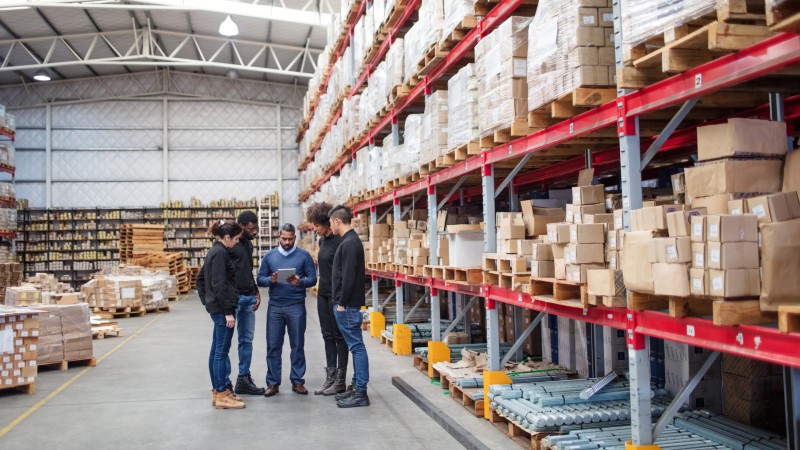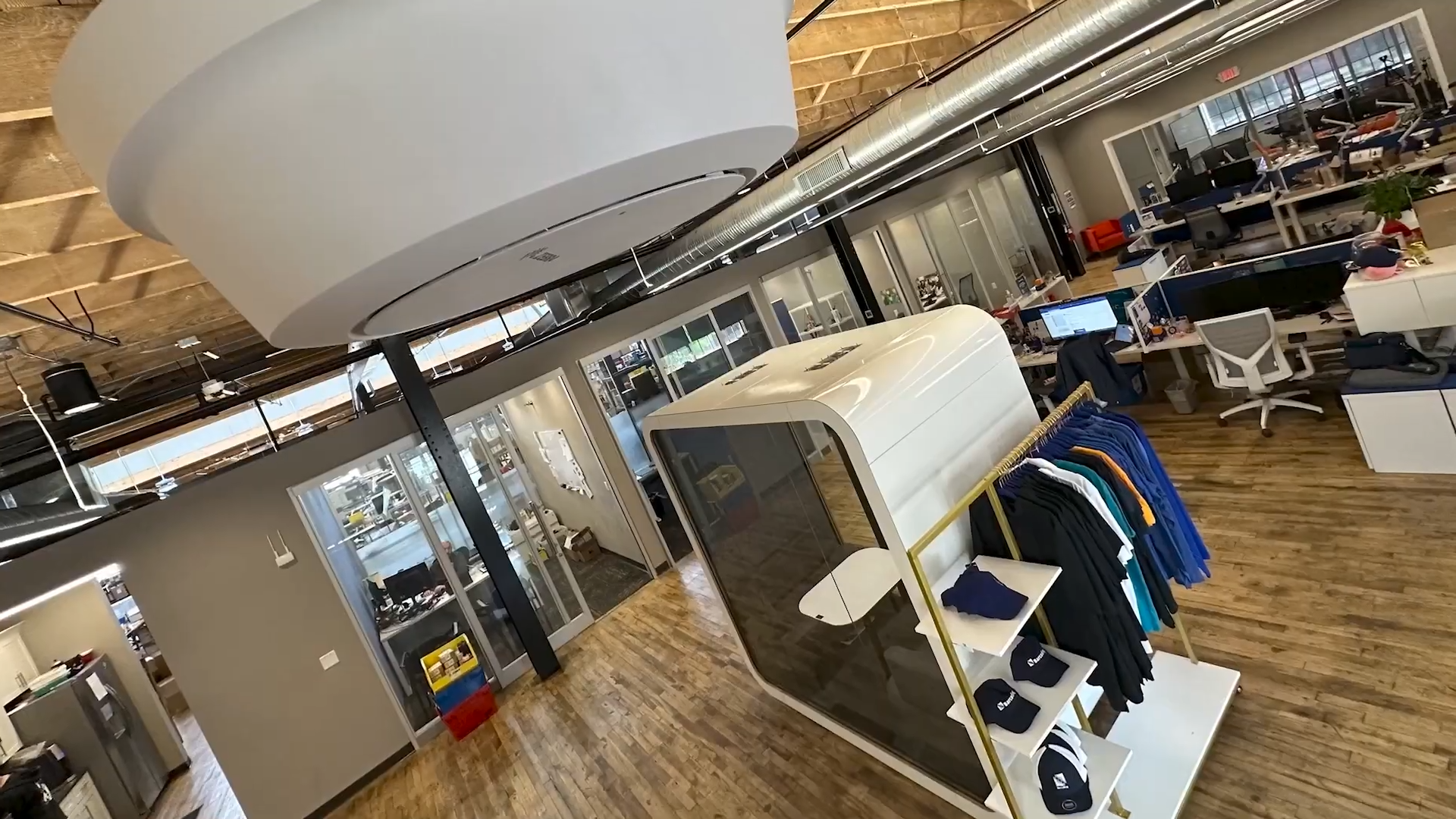A warehouse or distribution center that’s been optimally labeled creates a workplace environment in which handlers, pickers, and other workers can be their most productive. Your facility labeling game plan should include label placement, materials, adjacent technologies like printing and scanning, and your barcode data scheme.
When labels and signage are easy to spot and read, easy to scan with devices in use, and logical and intuitive to follow, workers can safely move faster—and make fewer errors. Improved accuracy means time and cost savings, fewer returns, optimal use of space, and an overall better employee experience on the job. A facility that’s labeled optimally supports more productive use of a warehouse management software solution, too.
But at the same time, if growth is an enterprise goal (as it often is), it’s not enough for a warehouse labeling system to be intuitive and easy to use. It also needs to offer flexibility and capacity to expand in the future.
Of course, the best time to formulate your warehouse labeling strategy is before operations begin—but if your DC is already in operation, these occasions also offer good reason to revamp your labeling system:
- Implementing a new warehouse management system (WMS)
- Additions or changes to your product mix
- Introducing e-commerce
- Existing labels are worn or scan poorly
- Current numbering system creates confusion
If now is the right time for you to implement a warehouse labeling system from the ground up—or reorganize your system to better support your workers—start with these four key considerations.
1. Tap Into Industry Wisdom and Listen to Your Own Teams
The return on your warehouse labeling investment will be measured in productivity and accuracy. Shortfalls are measured in wasted labor hours that workers spend trying to locate items. You’ll quickly discover that a little research can go a long way toward avoiding mistakes others have already learned from. Look to trusted industry experts as sources, and when you see specific tips and recommendations that come up again and again, pay attention; chances are, it’s good advice.
It’s just as important to recognize the ways your specific circumstances might require an individualized approach. Whether it’s your products, your employees, or other unique aspects of your warehouse, if you can see that a “standard” recommendation is simply not appropriate for your operations, dig in and look for better alternatives. Our pro tip: start with your processes and people.
2. Structure Your Information Hierarchy
Since warehouse location labels typically follow a hierarchy that goes from larger, more general spaces down to the individual item level, it’s smart to plan in that general direction. Drill down from zone to aisle, rack, shelf, bin/tote, and, finally, item-level labeling.
A map of the facility’s footprint can help you visualize the way workers interact with your system and the space, and help you understand whether your facility needs to be broken down into zones, or if aisles will be your largest warehouse unit. If your facility involves access-controlled areas or cold storage, these should be indicated in your labeling plan.
Use the warehouse map to understand how workers can move safest and most efficiently through the available space. What equipment and tools do they use to locate and move items, and in what directions do they need to move? It can be daunting to consider the ways a labeling scheme can impact the workday, but the care you put into planning really can pay off in the outcomes.
3. Use a Warehouse Management System
Data on your Item-level labels typically follow the top-down hierarchy, essentially providing travel directions that drill down step-by-step to the individual item’s location: zone, aisle, unit, rack, shelf, and row or bin. Systems often alternate between alphabetical and numerical characters for each—such as zone D, aisle 04, rack BC, shelf 17, bin 03, or D-04-BC-17-03, for example. Encoding your numbering scheme into your WMS sets you up for success, preventing mis-numbering and other errors. Incorporating color coding can help with even greater differentiation, too.
Whatever alphanumeric scheme you use, don’t simply start with A or 01. Instead, build flexibility into your system by starting with, for example, CA and/or 10, so you have room to add letters and/or numbers in either direction. And leave strategic gaps in your numbering system for areas where you expect to be adding new items in the future. And while the hierarchy is top-down, be sure to number racks and shelves from the bottom up—because it’s a heck of a lot easier adding items (and numbers) to the top than the alternative.
Barcode rack labels that contain the information in a scannable format make it fast and easy for workers to validate items and instantly update inventory as they pick, for more accurate order fulfillment and improved visibility into inventory.
Serpentine or Standard Aisle Numbering?
A serpentine system can be easier and more intuitive for workers to follow and memorize locations—even though in 2D planning tools, it might not look as simple as a standard numbering system. In a serpentine system, numbers follow the path a worker would walk up and down aisles, often reducing the steps needed to pick a complete order.The numbering system you designate should reflect the optimal picking technique for your facility.
4. Don’t Underestimate the Power of Labels
It’s hard to overstate the importance of choosing appropriate materials, formats, sizes, adhesives, and even coatings for the labels themselves. They need to be easy to locate, read, and scan. They need to resist peeling, tearing, scratching, fading, and other types of wear, especially in special environments like cold storage. And, of course, labels need to be sized appropriately for the item.
Work with an expert to choose materials, designs, and properties that work best with your scanning technologies and storage environments. The upfront investment pays off when your labels serve you well, and your labeling strategy continues to support future growth.
Learn more about label options, placement, printing, scanning, and warehouse management solutions to get your facility labeling strategy off to the right start. Click the link below to download our free guide.







